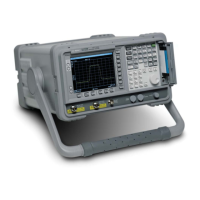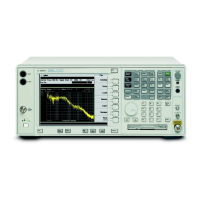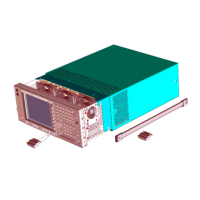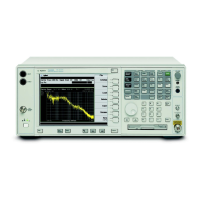Chapter 2 91
Front-Panel Key Reference
Display
straight line is used when interpolating
between points in a limit table. If
frequency interpolation is logarithmic,
frequency values between limit points
are computed by first taking the
logarithm of both the table values and
the intermediate value. A linear
interpolation is then performed in this
logarithmic frequency space. An exactly
analogous manipulation is done for
logarithmic amplitude interpolation.
Key Access:
Display, Limits, Limit 1 or
Limit 2, More
Amptd Interp
Log Lin
Allows you to determine how limit
trace values are computed between
points in a limit table. The available
interpolation modes are linear and
logarithmic. If the linear mode is used
for both frequency and amplitude, a
straight line is used when interpolating
between points in a limit table.
Key Access:
Display, Limits, Limit 1 or
Limit 2, More
NOTE Interpolation modes determine how limit values are computed between
points in the limit table. The appearance of a limit trace is also affected
by the amplitude scale, which may be linear or logarithmic.
X Axis Units
Freq Time
Selects whether limit lines will be entered using frequency or sweep
time to define the segments. They can be specified as a table of limit
line segments of amplitude versus frequency, or of amplitude versus
time. Time values are evaluated with respect to the analyzer sweep
time. A time value of zero corresponds to the start of the sweep, which
is at the left edge of the graticule.
Switching the limit line definition between frequency and time will
erase both of the current limit lines. The message Changing X axis
units will delete all limits. If you are sure, press key
again to change units will appear. Press
X Axis Units Freq Time again
to purge both limit lines and switch between frequency and time.
Key Access:
Display, Limits

